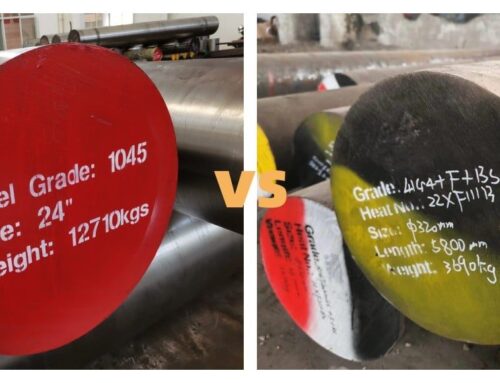
Different from the traditional petroleum steel grades 4140, 4130 and 4340, 4145H and 4330V steels are more and more concerned and applied in the oil and gas industry due to their excellent performance.
Where there is demand, there is a market, and where there is a market, there will be competition and choice. For the demanders, how to choose is the top priority. The premise of choice is based on the ability to understand their differences. This is the topic that this article will continue to explore in depth.
1.Chemical Composition
| Grade | C | Si | Mn | P | S | Cr | Ni | Mo | V |
| 4145H | 0.43-0.48 | 0.15-0.35 | 0.75-1.0 | ≤0.035 | ≤0.04 | 0.8-1.1 | - | 0.15-0.25 | - |
| 4330V | 0.28-0.33 | 0.15-0.35 | 0.75-1.0 | ≤0.025 | ≤0.015 | 0.75-1.0 | 1.65-2.00 | 0.35-0.50 | 0.05-0.10 |
As can be seen from the above table, the difference between the chemical elements of 4145H and 4330V is obvious, especially in the content of C, Ni, Mo and V elements.In terms of composition, 4145H is somewhat similar to the high-carbon version of 4140, while 4330V is similar to the low-carbon version of 4340 steel.
In addition,the addition of more alloying elements means greater manufacturing costs. From this point of view, the price of 4330V steel is significantly more expensive than 4145H steel.
2.Weldability
We analyze according to the carbon equivalent formulaCE=C+Mn/6+(Cr+Mo+V)/5+(Ni+Cu)/15,and combined with the chemical composition of the above table.Although 4330V contains more alloying elements, which is not good for welding, but due to its low carbon content, 4330V has better weldability than 4145H after comprehensive calculation.
3.Mechanical Property
Undoubtedly, as alloy structural steels, 4145H and 4330V cannot meet the application requirements without heat treatment.Usually, 4145H and 4330V steels need quenching and tempering heat treatment to complete the transformation of their properties.
Compared with 4145H steel, 4330V has better hardenability and impact toughness by adding Ni and V elements, and it helps to achieve higher strength and hardness under the same diameter.
4145H & 4330V Mechanical Property in Quenching & Tempering Condtion
| Grade | Tensile Strength ksi | Yield Strength ksi | Elongation % | Reduction % | CVN @ 23℃,J | CVN @ -20℃,J | CVN @ -46℃,J | Hardness HBW (HRC) |
|||
| Average | Single | Average | Single | Average | Single | ||||||
| 4145H | ≥140 | ≥120 | ≥14 | ≥45 | ≥54 | ≥54 | ≥42 | ≥30 | ≥27 | ≥20 | 285-341 (30-36) |
| 4330V | ≥165 | ≥155 | ≥14 | ≥45 | ≥54 | ≥54 | ≥27 | ≥20 | / | / | 319-371 (34-40) |
Through the above comparison, we can see the difference between the two grades of 4145H and 4330V, but this does not affect their wide application in the oil drilling industry, and they can perfectly play their performance advantages. Such as the common 4145H drill collar, 4330V drill pipe and joints.
As an excellent petroleum steel supplier, we are willing to provide you with high-quality 4145H and 4330V steel. If you have this demand, please feel free to contact us.





